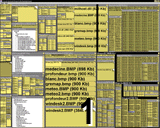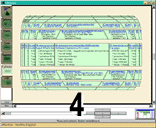Abstract
After saying a few words about the lab where I did my work in Grenoble, I will present my thesis two
main research axes: Multimodality and Visualization. The goal of my research is to apply multimodal
interactions to the design of graphical user interfaces for large information spaces. The large variety
of multimodal interfaces stems from the diversity of available modalities AND on the many ways of combining them.
For input user interfaces, the "put that there" paradigm illustrates through the usage of different
modalities (speech and mouse) the variety of interaction means. This richness stems not only from the
different available modalities but also comes from the multiple ways of combining them: There are spatial,
temporal, syntactic and semantic aspects involved in the combination of modalities.
For output multimodality, the "look at that" paradigm will be introduced. For example a system can display
a graphic and play a sound "this graphic has been updated 15 minutes ago". The aspects of the combination
for output are similar to those for input. The main difference is that the system must be able to combine
the modalities (selection, synchronization, etc.): that is the combination is no longer performed by the user.
Screen-based modalities, play a central role in my work because my research focuses on the design of
output multimodal user interfaces for large information spaces. Graphical modalities define a vast range
of possibilities. A graphical multimodal user interface can for example provide to the user several views
of different data at the same time or different complementary views of the same data such as the focus+context
design rule. In these two cases, the richness of the interface is due to the use of different graphical modalities
and the various ways of combining them. To better understand this combination I will present several existing
taxonomies in visualization and our design space, which contains various combinations of output modalities.
At last I will present three systems or will make three demonstrations depending on the possibilities.
These three visualization systems illustrate the concepts of the taxonomies and raise new chalenges
and new problems. The talk will surely finishes with informal discutions about implementing visualization
systems in JAVA, adding new features to my systems, exchanging piece of code ...
Introduction
Multimodality applied to visualization
Visualization : Taxonomies to understand
Visualization : from concepts to implementation (links in french, sorry)


